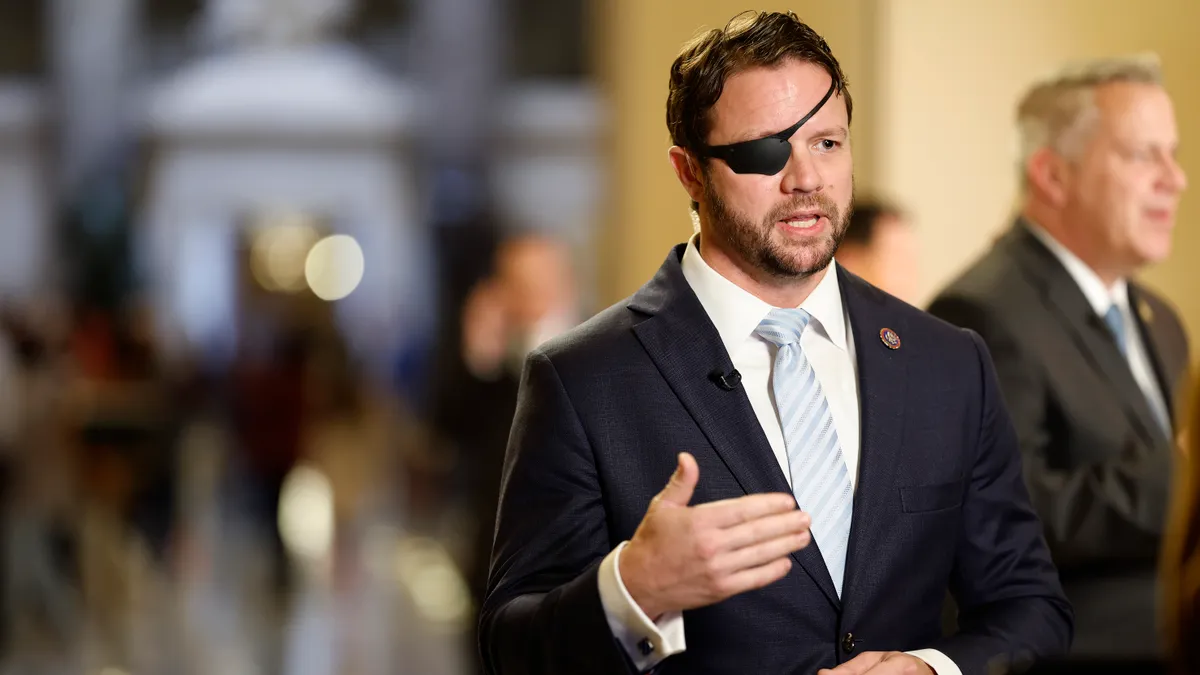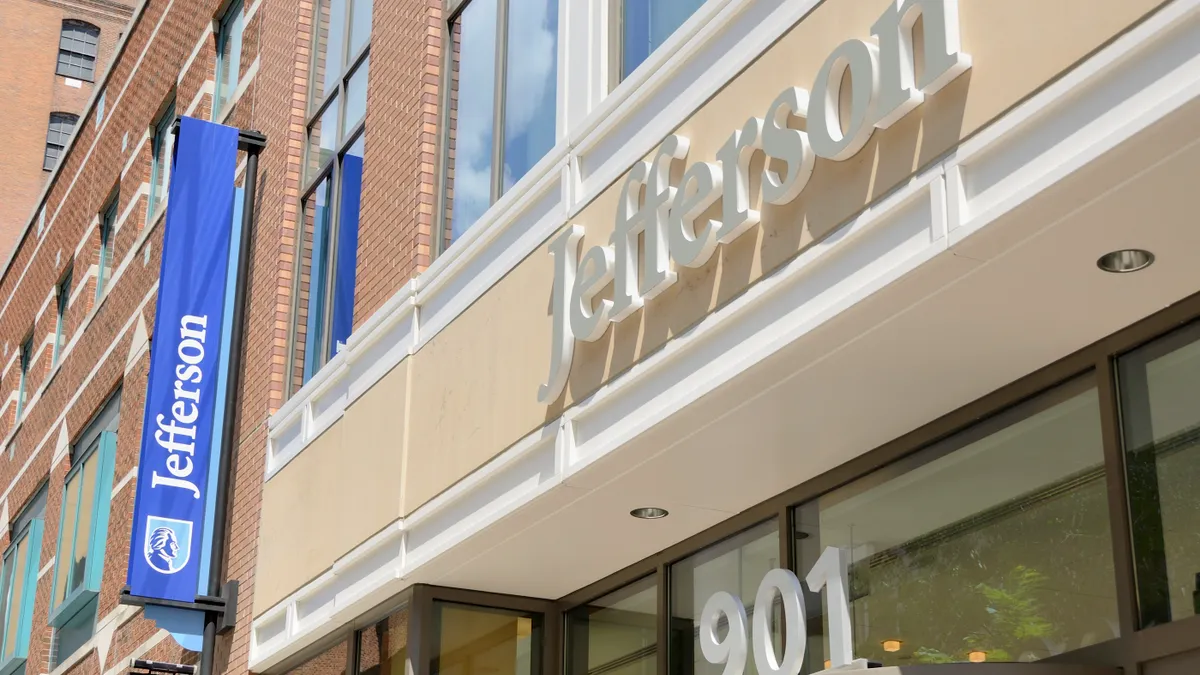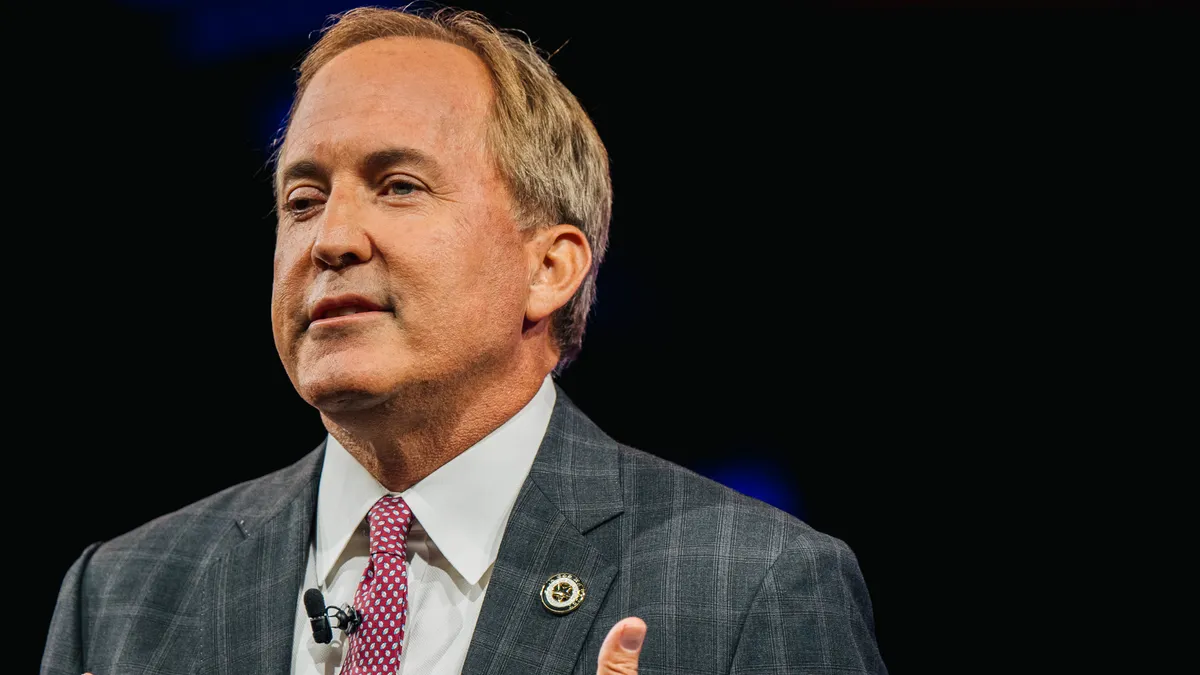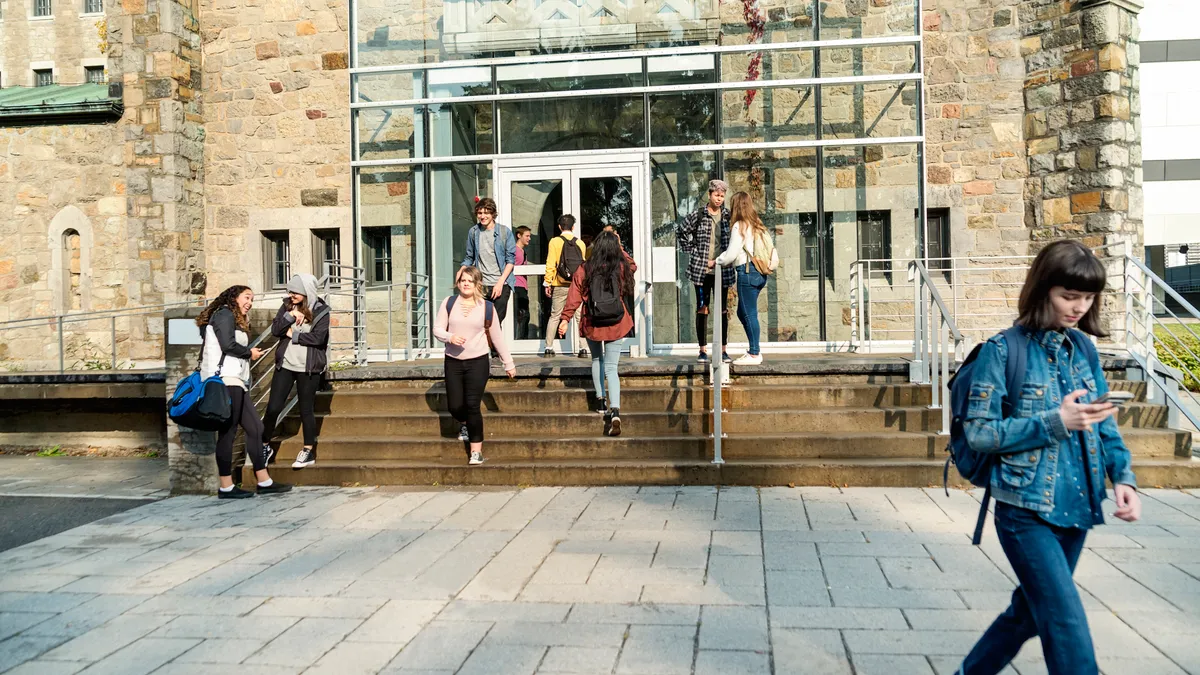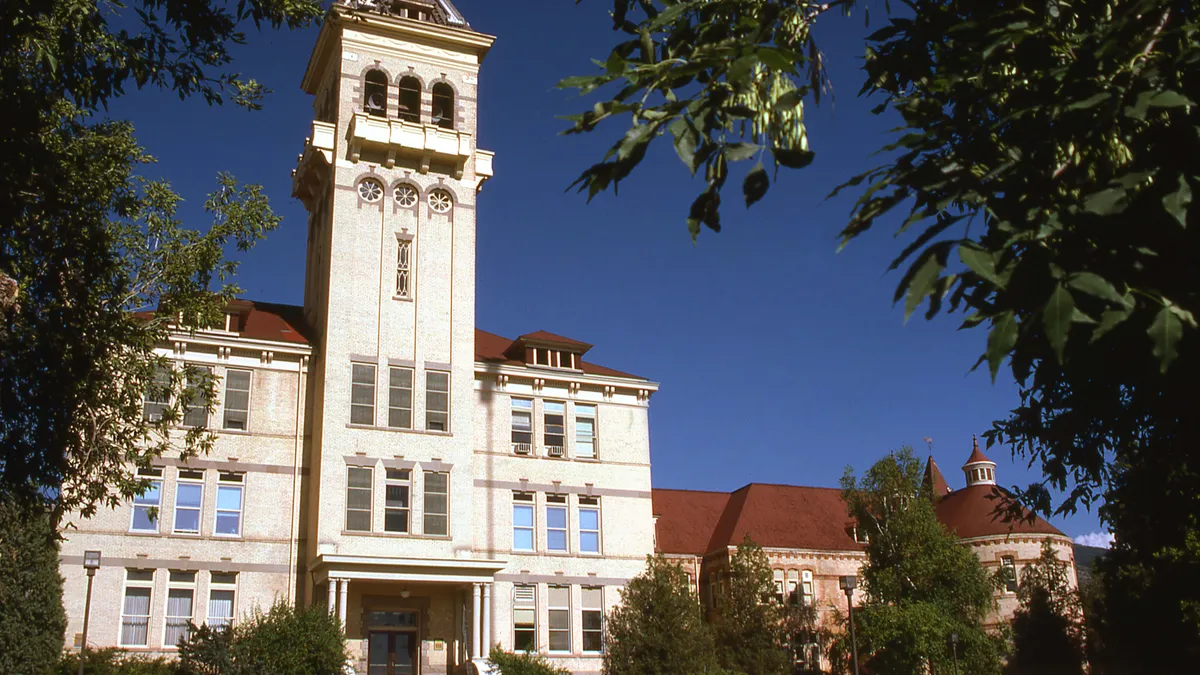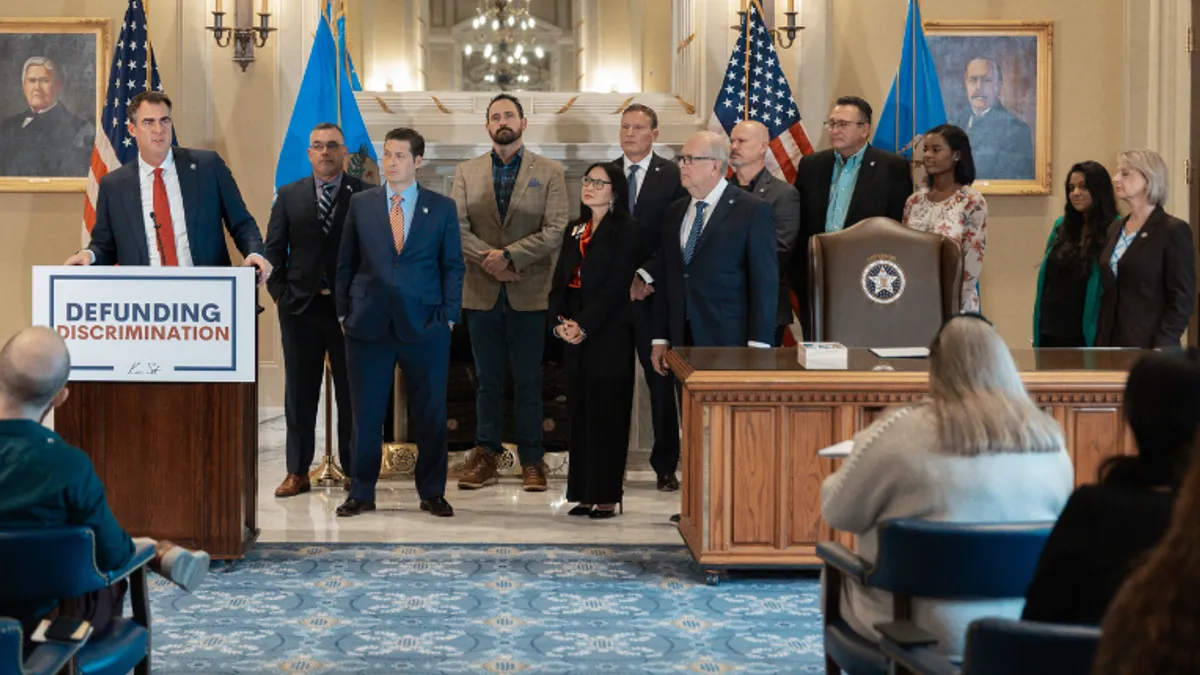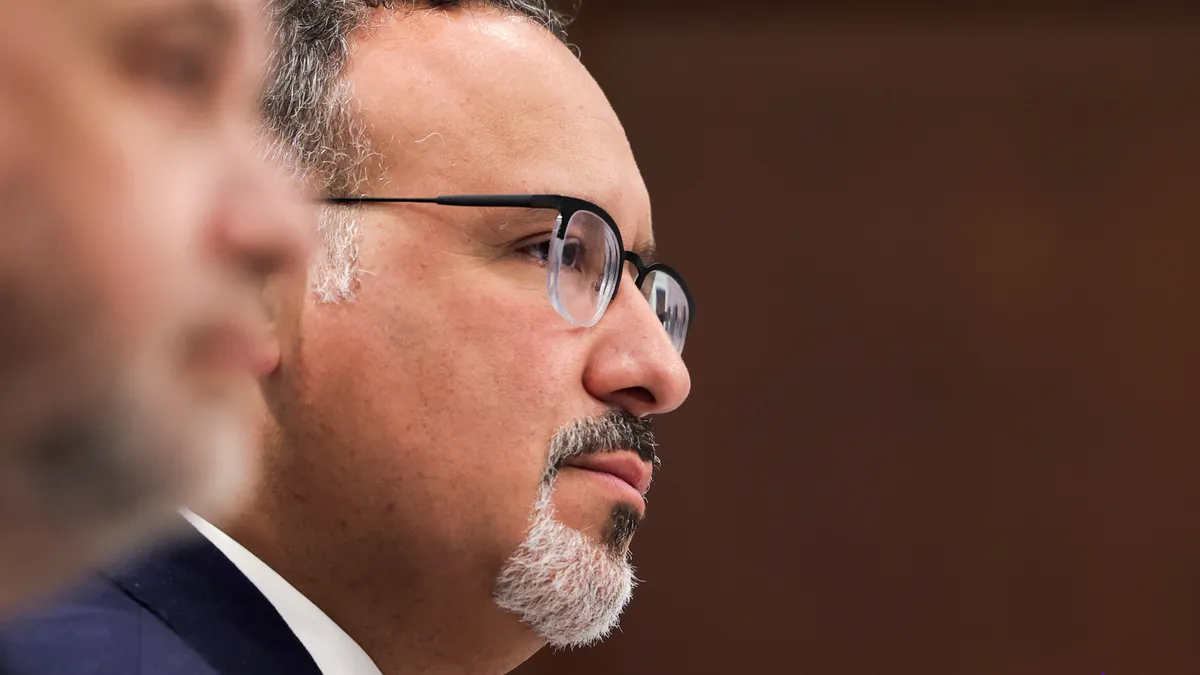President Joe Biden said Wednesday he would take executive action to cancel what’s likely the largest amount of student loan debt in history, fulfilling a pledge he made on the campaign trail and at least somewhat assuaging the progressive wing of his party.
Biden announced loan forgiveness of up to $10,000 for most borrowers, and up to $20,000 for federal Pell Grant recipients — those who come from low- and moderate-income backgrounds. The debt relief has an income cap, making it available only to individuals who earn less than $125,000 a year, or less than $250,000 a year for families who file taxes jointly.
The administration said nearly 8 million borrowers may be eligible to receive relief automatically because the U.S. Department of Education already possesses the relevant income data. Otherwise, a “simple application” will be available in the coming weeks, before the end of the year, officials said.
Current students with debt are eligible for loans that originated before July 1. Loans made for graduate school or to parents to pay for their children’s college education also qualify.
Privately held loans will not be affected.
The White House — which also announced Wednesday it will extend a pandemic-induced pause on student loan payments through the end of December — had long faced pressure to wipe away loan debt as COVID-19 continued to squeeze the economy and vulnerable borrowers.
Up to this point Biden held off, opting instead to remold aspects of the beleaguered student loan system. The Education Department is pursuing regulatory action on programs like income-based repayment plans, which determine monthly installments using borrowers' salaries, and Public Service Loan Forgiveness, which cancels debt for nonprofit and government workers after a decade of qualifying payments.
Biden’s moves, which were revealed in media reports prior to Wednesday’s announcement, earned praise from some Democrats and advocacy groups.
“With the flick of a pen, President Biden has taken a giant step forward in addressing the student debt crisis by canceling significant amounts of student debt for millions of borrowers,” Senate Majority Leader Charles Schumer and Sen. Elizabeth Warren of Massachusetts said in a joint statement. “No president or Congress has done more to relieve the burden of student debt and help millions of Americans make ends meet.”
But some of those loan forgiveness supporters had urged him to forgive a larger sum of debt.
Before Wednesday’s announcement, NAACP President Derrick Johnson said the policy doesn’t go far enough, framing the limited relief as a decision that would leave Black individuals floundering. Black borrowers average higher student loan debt than White borrowers.
“And tragically, we’ve experienced this so many times before. The interstate highway system devastated Black communities,” Johnson said in a statement. “Welfare reform tossed poor people of color by the wayside.”
The focus on Pell Grant recipients, and an income limit, signals the administration’s desire to target forgiveness to those most in need. However, Biden’s use of means testing chafed some progressives and policy experts. Barmak Nassirian, vice president for higher education policy at advocacy group Veterans Education Success, tweeted that it's likely implementing a means-based system will cost more than savings from universal loan cancellation, “so it is purely a political ploy to look fiscally ‘responsible.’”
“Odds are also that many eligible borrowers — particularly the poorest and the ones most in need — will be unable to navigate the inevitable Rube Goldberg system of eligibility verification and be denied the theoretical relief that could and should be delivered to them,” Nassirian wrote.
Conservatives also pounced on Biden, accusing him of pushing a radical agenda and acting out of political motivation ahead of the November midterm elections — in which Democrats are expected to struggle to retain control of Congress.
Rep. Virginia Foxx, Republican from North Carolina and ranking member of the House Education and Labor Committee, said in a statement Biden “would do anything to appease his radical progressive base.”
“This is a slap in the face to those who never went to college, as well as borrowers who upheld their responsibility to taxpayers and paid back their loans,” Foxx said. “It’s a signal to every freshman stepping foot on campus to borrow as much as they can because taxpayers are picking up the tab.”
Foxx plugged a bill Republicans have presented as a foil to Biden’s student loan system proposals, which would whittle down the types of repayment plans the Education Department could offer and eliminate programs like Public Service Loan Forgiveness.
Political pundits say broad loan forgiveness might endear Democrats to some voters. But even centrist Democrats expressed skepticism as media reports circulated Tuesday that Biden would cancel loan debt, raising questions about whether doing so would exacerbate soaring inflation.
Larry Summers, former president of Harvard University who was Treasury Secretary during the Clinton administration and an economic adviser to former President Barack Obama, tweeted Tuesday that generous student loan relief and a continued repayment pause would disproportionately benefit high-earning Americans and entice colleges to hike tuition.
The federal student loan balance has more than tripled since 2007, rising from $516 billion that year to $1.6 trillion today. Biden’s decision to wipe out $10,000 for most borrowers cancels the entire balances of about a third of the roughly 45 million borrowers, even before accounting for the additional relief for those who received Pell Grants.
Modeling by the University of Pennsylvania's business school estimated $10,000 in loan forgiveness would cost at least $300 billion over a decade.
Ted Mitchell, president of the American Council on Education, higher ed’s top lobbying group, in a statement applauded Biden’s decision. Mitchell said the action is particularly important now as Americans recover from the pandemic.
But Mitchell called for a more substantial rework of the federal student loan system, taking to task Congress, state legislatures, federal agencies, loan servicers and colleges for its current state. Federal lawmakers should lower loan interest rates, cap interest accruing on loans and streamline the loan system generally, Mitchell said. He also called for restoring students' ability to discharge student loan debt through the bankruptcy process.
And the Education Department should cut loose poorly performing loan servicers while states invest more in higher ed, he said.
“So even as we applaud today’s move to forgive a portion of student loan debt, we must understand that the federal student loan program is broken and that it is incumbent on all of us … to fix it, and to do so as quickly as possible,” Mitchell said.
Biden said on Twitter that loan forgiveness, and his extension of the more than two-year loan repayment pause, will “give working and middle class families breathing room.” The administration said this will be the final extension. The repayment moratorium was due to expire Aug. 31, though it was somewhat expected Biden would push back the date again. This means borrowers can still opt to not make monthly payments and avoid interest accruing on their debt.
The decision is expensive, though. The U.S. Government Accountability Office estimated that by April 30, the pause had cost about $102 billion in payments borrowers didn’t make and interest that did not accrue on loans.
This story has been updated with statements from lawmakers and the American Council on Education.





